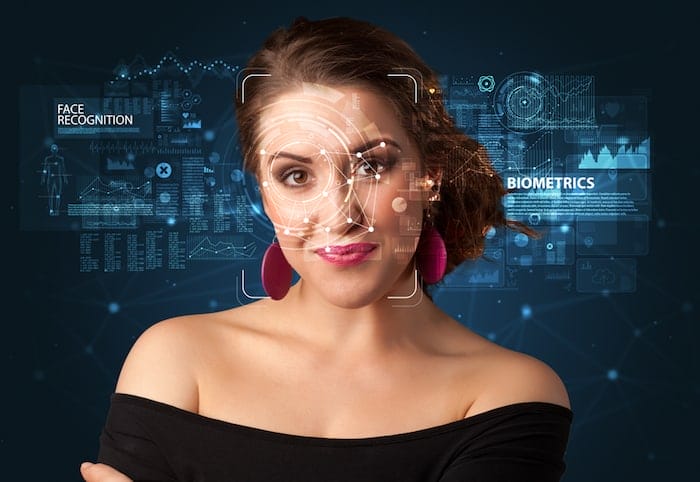By Inga Shugalo
During the pandemic peak, AI and computer vision tools were in the spotlight. Statista reports, the healthcare and medical industries increased their investments in AI by 44% in 2020. Now the situation seems to have stabilized, several vaccines have been developed, and vaccination is in full swing worldwide. What is going to happen with those AI tools? Let’s have a closer look.
Computer vision tools: what’s new?
Unfortunately, the pandemic hasn’t subsided yet, so specific computer vision tools are still relevant. In this turbulent time, computer vision has become a powerful tool for infection control and prevention. For example, Taiwan installed an efficient computer vision solution at the country’s entry points to prevent the spread of the disease from the pandemic outset.
One year later, the Taiwanese specialists developed an AI solution integrated with infrared thermal image color displays to detect high temperature by the forehead in multiple individuals. The AI algorithm is trained to focus only on the forehead and ignore other heat sources. The integrated tool calibrates the data and loads a person’s daily temperature measurements and ambient data to a database. As for the measurement accuracy, it reaches about 90%.
A range of computer vision software helps industries adapt to the new normal. In manufacturing, such tools help ensure safety and security, both in terms of working with dangerous equipment and disease treatment. If an employee doesn’t wear their protective equipment, safety teams can be alerted to fix the issue and protect the employee and everyone around them.
Computer vision tools can also transform shopping by introducing checkout-free shopping that spares customers the trouble of waiting in line and manual inventory-taking for retailers. Luckily, such AI solutions are budget-friendly and can be managed remotely when the store is closed. Besides, such solutions easily integrate with in-store systems (POS, back-end ordering solutions, and other).
Medical image analysis: a broader focus
Amidst the pandemic, medical image analysis has played a critical role in detecting the virus and COVID-related pneumonia. AI developers have created several tools that either perform at the same level as human radiologists or outperform them. Thus, an X-ray reading tool from the Northwestern Memorial Healthcare System (Chicago, Illinois) detects the infection ten times faster than qualified thoracic radiologists. As for the tool’s precision, it’s compatible with that of doctors—82% for the tool against 76-81% for radiologists. This level of accuracy is not the upper limit of AI-driven medical imaging tools.
COVID-19 is not the only disease that medical image analysis can help with. Such tools have proved efficient in detecting CVD-related changes in heart structures. Cardiovascular disease is the number one of death in Americans of all ages and ethnic groups. MRI, CT, and echocardiogram are the most popular diagnostic means for heart diseases today, and there’s a set of AI tools able to perform the analysis. According to experts, these AI-driven solutions offer an impressive potential in cardiology.
Such tools have also proved efficient in pathology detection. Researchers from the University of Hawaii found that their deep learning model can successfully detect cancer risk factors in mammograms.
Deep learning networks also successfully power smart analysis of ultrasonic images. The key application areas involve a range of anatomical regions, namely thyroid, breast, heart and blood vessels, musculoskeletal system, and other organs.
A challenge and its solution
Image analysis solutions can make a viable alternative for providers of any scale thanks to a high level of precision and a manifold increase in the analysis speed. Nevertheless, experts recommend treading carefully. When used in a new setting, AI algorithms behavior may be somewhat unpredictable. For this matter, experts advocate for creating a diagnostic standard for AI in medicine to prevent bias and costly mistakes.
To solve this challenge, researchers from the Institute for Human-Centered Artificial Intelligence, Stanford University, have designed a five-step strategy for AI tool validation. It covers evaluating the tool in a controlled environment, deploying it in a real-world setting, and observing its performance over time.
Summing up
As we can see, the tools developed during the pandemic are here to stay, evolving and adapting to new conditions. Computer vision tools now help ensure safety not only in public places but also in various enterprise settings by detecting occupational risks. Computer vision solutions also help retailers adapt to consumers’ preferences when it comes to touchless retail.
As for medical image analysis solutions, their use in the industry is expanding beyond COVID-19 detection. They can successfully read MRI, X-ray, echocardiogram and ultrasound scans swiftly and cost-effectively. Though there are certain challenges concerning the use of such tools at a large scale, they work efficiently across individual hospitals. They act like an additional “pair of eyes” that can detect patterns that doctors can’t due to human limitations. In their turn, doctors can always consider the results and dismiss false positives or change the initial diagnosis to improve patient care and outcomes.
The Editorial Team at Healthcare Business Today is made up of skilled healthcare writers and experts, led by our managing editor, Daniel Casciato, who has over 25 years of experience in healthcare writing. Since 1998, we have produced compelling and informative content for numerous publications, establishing ourselves as a trusted resource for health and wellness information. We offer readers access to fresh health, medicine, science, and technology developments and the latest in patient news, emphasizing how these developments affect our lives.








